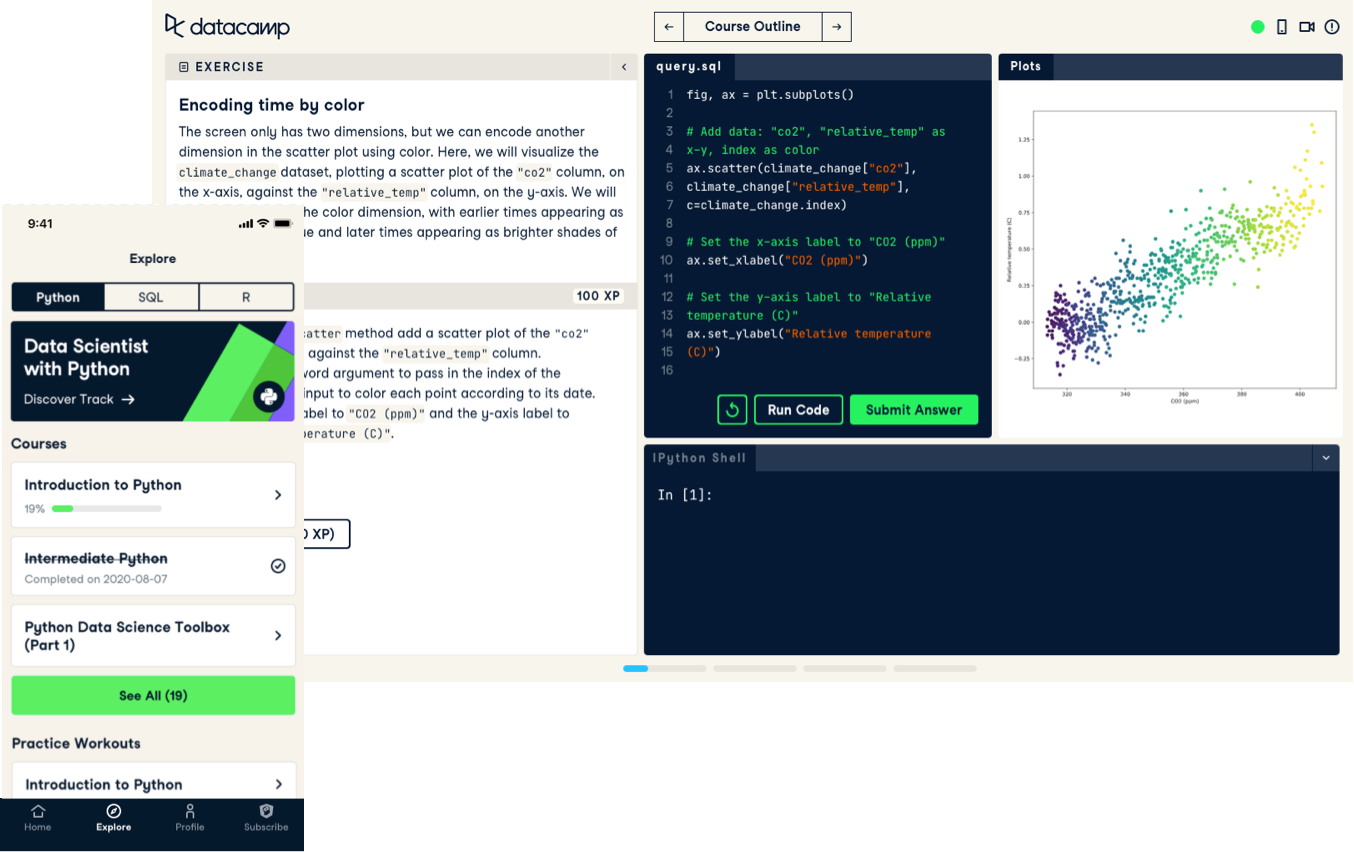Introduction to Databases in Python
In this course, youll learn the basics of relational databases and how to interact with them.
Siga videos cortos dirigidos por instructores expertos y luego practique lo que ha aprendido con ejercicios interactivos en su navegador.

In this course, youll learn the basics of relational databases and how to interact with them.
Learn how to identify, analyze, remove and impute missing data in Python.
Aprende sobre los desafíos de monitorear modelos de aprendizaje automático en producción y cómo abordarlos.
Learn fundamental probability concepts like random variables, mean and variance, probability distributions, and conditional probabilities.
Begin your journey with Scala, a popular language for scalable applications and data engineering infrastructure.
Learn to analyze data over time with this practical course on Time Series Analysis in Power BI. Work with real datasets & practice common techniques.
Learn how to use tree-based models and ensembles to make classification and regression predictions with tidymodels.
Master SQL Server programming by learning to create, update, and execute functions and stored procedures.
Leverage the power of Python and PuLP to optimize supply chains.
Learn to solve real-world optimization problems using Pythons SciPy and PuLP, covering everything from basic to constrained and complex optimization.
The Generalized Linear Model course expands your regression toolbox to include logistic and Poisson regression.
Learn the essentials of parsing, manipulating and computing with dates and times in R.
Learn how to make predictions about the future using time series forecasting in R including ARIMA models and exponential smoothing methods.
Learn how to use Python to create, run, and analyze A/B tests to make proactive business decisions.
Master Amazon Redshifts SQL, data management, optimization, and security.
Learn the most important functions for manipulating, processing, and transforming data in SQL Server.
Learn about AWS Boto and harnessing cloud technology to optimize your data workflow.
Discover how to use the income statement and balance sheet in Power BI
Explore association rules in market basket analysis with Python by bookstore data and creating movie recommendations.
Learn how to develop deep learning models with Keras.
Learn how to structure your PostgreSQL queries to run in a fraction of the time.
This course will equip you with the skills to analyze, visualize, and make sense of networks using the NetworkX library.
Discover how the Pinecone vector database is revolutionizing AI application development!
Learn to analyze and visualize network data with the igraph package and create interactive network plots with threejs.
Learn about MLOps architecture, CI/CD/CM/CT techniques, and automation patterns to deploy ML systems that can deliver value over time.
You will use Net Revenue Management techniques in Excel for a Fast Moving Consumer Goods company.
This Power BI case study follows a real-world business use case on tackling inventory analysis using DAX and visualizations.
Learn how to design Power BI visualizations and reports with users in mind.
Learn basic business modeling including cash flows, investments, annuities, loan amortization, and more using Google Sheets.
Learn to manipulate and analyze flexibly structured data with MongoDB.